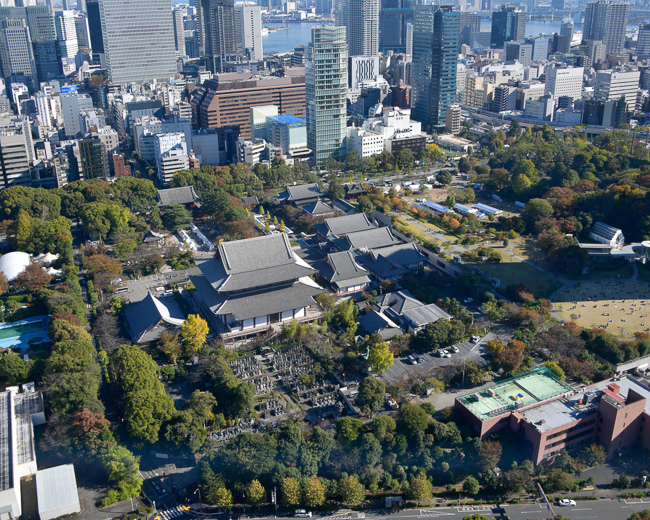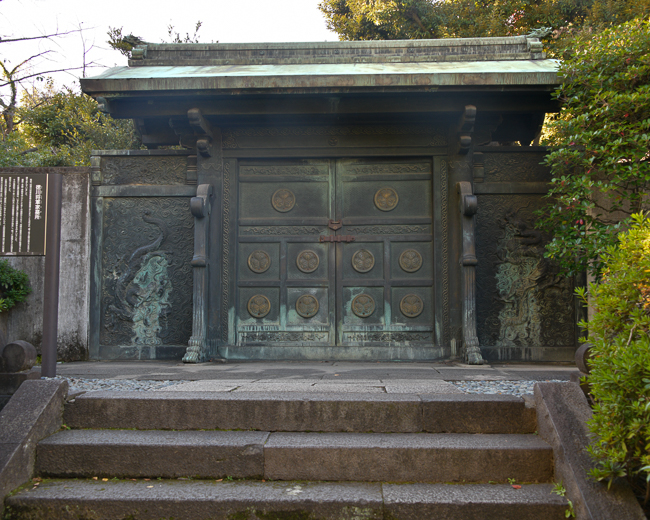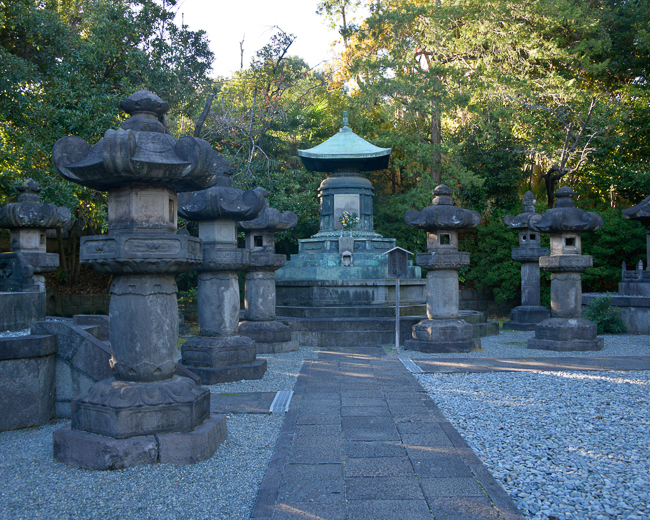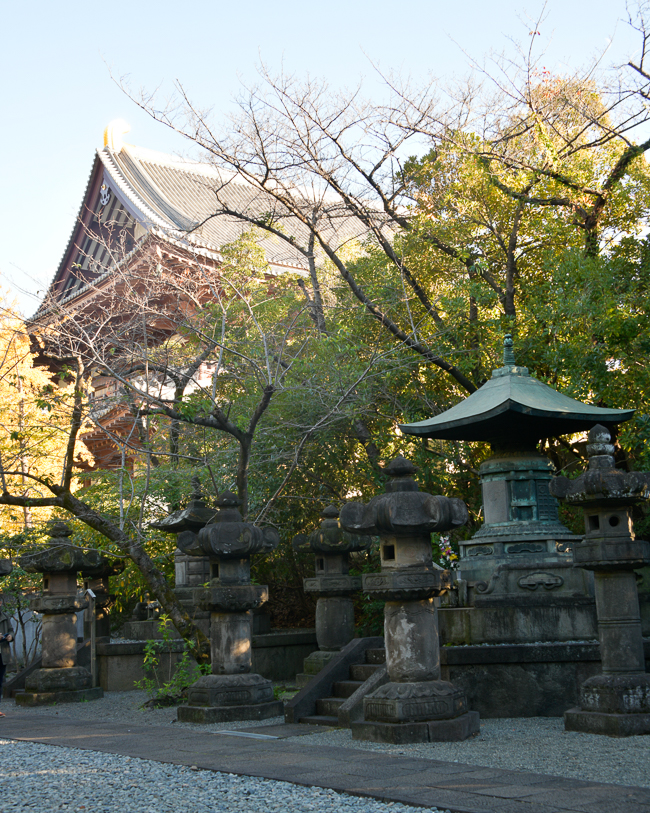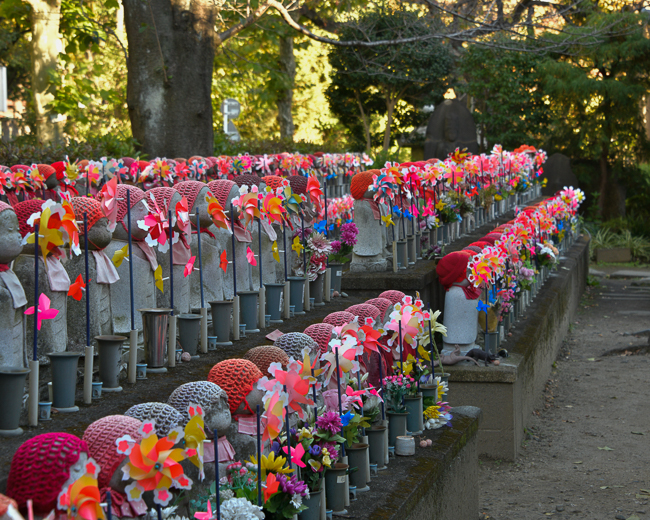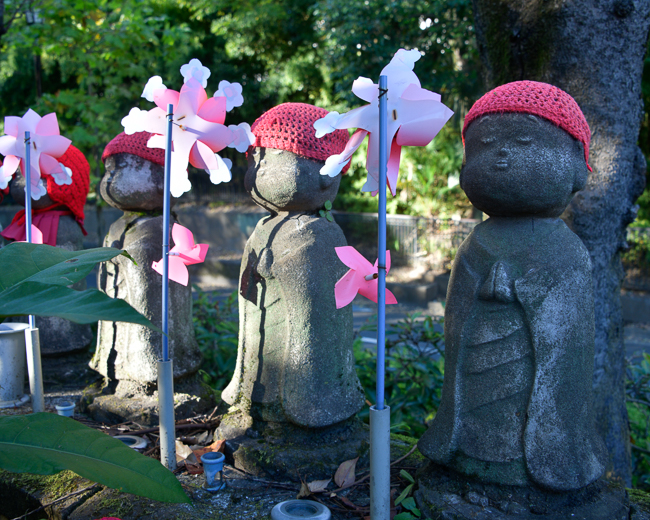November 19, 2023
Zojoji was founded by the priest Yuyo Shoso in 1393 as the first Jodo Buddhist practice hall in the area. During the Edo period (1600-1868), it was the family temple of the Tokugawa shoguns, becoming the center of all Jodo Shu temples in Japan. At its peak, the temple grounds held more than 120 buildings with approximately 3000 priests.
Buddhism declined during the Meiji period (1868-1912), and then over the years almost all of the Zojoji buildings were lost to fire, natural disasters, or destroyed in the bombings of World War II. The temple was gradually restored and now functions mostly as a cultural center.
Jizo
The Kojoji temple has a long line of Ojizo-sama running along the edges (also called Jizo, also or O-Jizo-san). Ojizo-sama is a bodhisattva and is one of the most beloved figures of Japanese Buddhism. You will see them absolutely everywhere.
The Jizo is often seen as a protector of children. The story goes, that the souls of children who die before their parents are not capable of crossing the fabled Sanzu River (similar to the Styx river in Greek mythology) in the afterlife. This is because they have not had the time to do enough good deeds (karma) and they have made their parents suffer. Therefore, O-Jizo-sama is widely recognized as the patron of dead children, especially still-born and aborted children.
